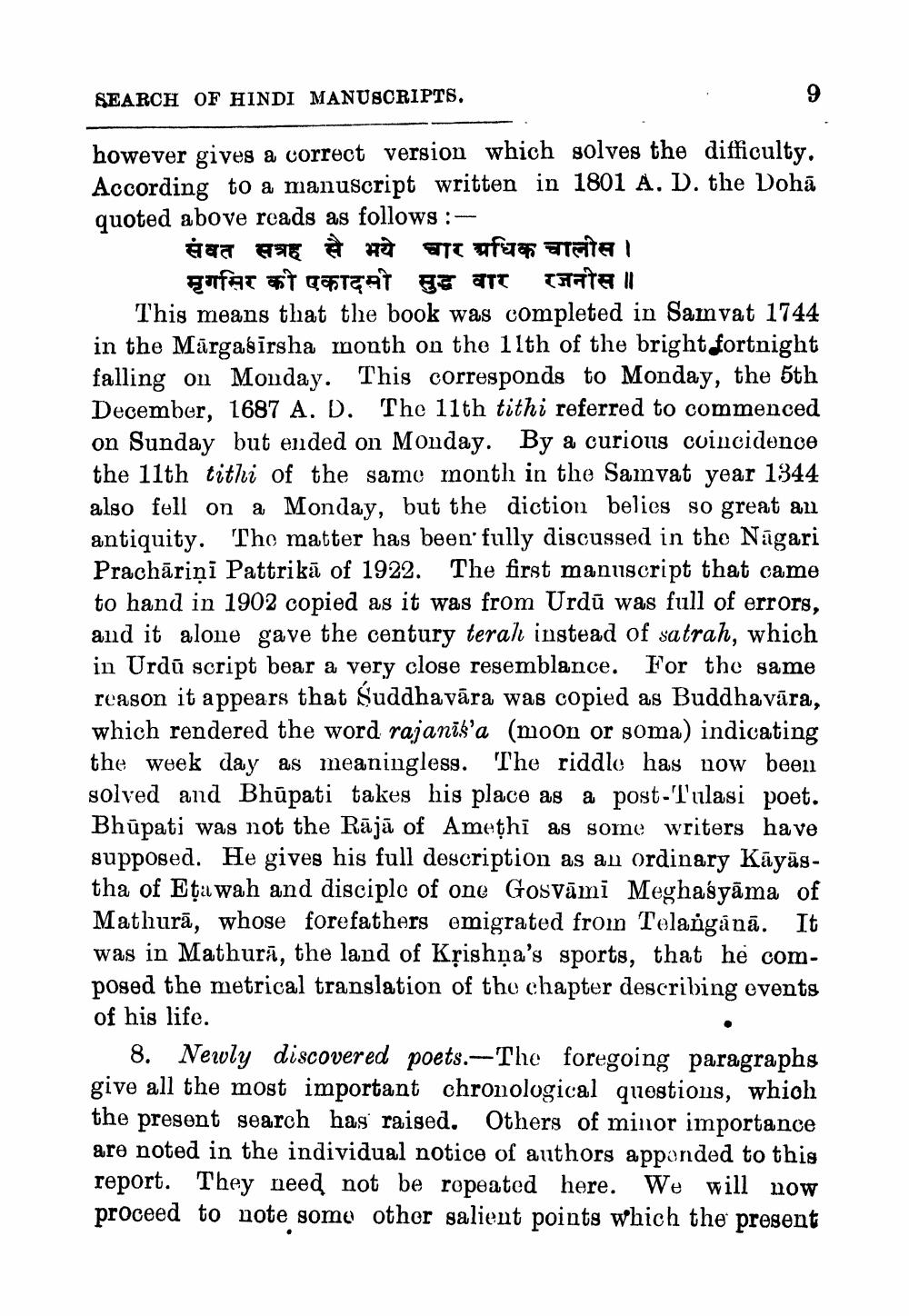________________
SEARCH OF HINDI MANUSCRIPTS,
9
however gives a correct version which solves the difficulty. According to a manuscript written in 1801 A. D. the Dohā quoted above reads as follows:
संवत सत्रह से भये चार अधिक चालीस ।
मृगसिर की एकादमी सुद्ध वार रजनीस ॥ This means that the book was completed in Samvat 1744 in the Mārgaśīrsha month on the 11th of the bright fortnight falling on Monday. This corresponds to Monday, the 5th December, 1687 A. D. The 11th tithi referred to commenced on Sunday but ended on Monday. By a curious coincidence the 11th tithi of the same month in the Samvat year 1344 also fell on a Monday, but the diction belies so great an antiquity. The matter has been fully discussed in the Nagari Prachāriņi Pattrikā of 1922. The first manuscript that came to hand in 1902 copied as it was from Urdū was full of errors, and it alone gave the century terah instead of satrah, which in Urdū script bear a very close resemblance. For the same reason it appears that Suddhavāra was copied as Buddha vāra, which rendered the word rajanīs'a (moon or soma) indicating the week day as meaningless. The riddlo has now been solved and Bhūpati takes his place as a post-Tulasi poet. Bhūpati was not the Rājā of Amethi as some writers have supposed. He gives his full description as an ordinary Kāyāstha of Eţawah and disciple of one Gosvāmi Meghaśyāma of Mathurā, whose forefathers emigrated from Telanganā. It was in Mathurā, the land of Kșishṇa's sports, that he composed the metrical translation of the chapter describing events of his life.
8. Newly discovered poets.-The foregoing paragraphs give all the most important chronological questions, whioh the present search has raised. Others of minor importance are noted in the individual notice of authors apponded to this report. They need not be ropeated here. We will now proceed to note some other salient points which the present




